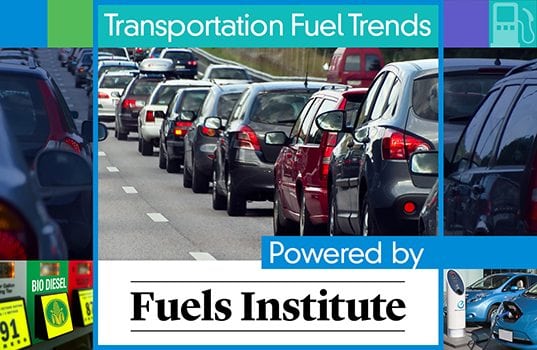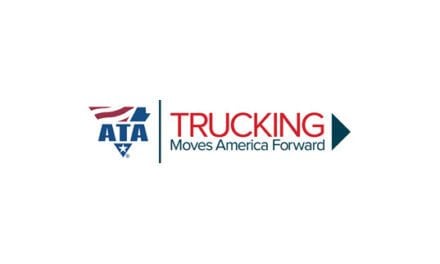Can government regulations spur sustainable improvements in the transportation market?
By John Eichberger
Editorial Note: This article ran previously in the August issue of NACS Magazine
What spurs innovation? The most obvious answer is the observation of something in need of improvement or identification of a need that must be served. This need sparks the creative genius that we all hope lives inside each of us. But there is another very strong catalyst that leads to innovation: regulation.
For those involved in the business world regulation is often viewed with contempt and anyone who advocates on behalf of it is considered a Communist. Oftentimes, I don’t disagree.
However, taking personal bias out of the equation and looking at reality, it’s clear that regulatory requirements in the fuels and vehicles industries have spurred innovative change. But my question is this: Can innovation be self-sustaining if it comes from government regulation?
Government regimes rise and fall every day, and while the U.S. system of government has persevered for nearly 240 years with only modest adjustments, those who interpret and manage the system rotate frequently. This means that U.S. regulations can be cast aside when presidential administrations change. So again, can regulatory innovation be sustainable?
Let’s look at some of the regulations sparking changes in the transportation sector. While we cannot answer my question relative to these existing programs, it is worth taking the time to think about a possible answer — especially if you are in the position to make investments based on market opportunities that derive from the regulation in question.
Corporate Average Fuel Economy (CAFE) Standards
The requirement for vehicle manufacturers to improve the fuel efficiency of their fleets is spurring tremendous investment and innovation in vehicle propulsion technologies. At the heart of these new standards is a desire by the federal government to reduce greenhouse gas (GHG) emissions. The miles-per-gallon standard is a calculated equivalent of GHG emission reductions. Results of the current standards have been the downsizing of gasoline engines and the more frequent use of turbo boosting; the introduction of more diesel-powered light duty vehicles; the development of more hybrid electric vehicles and battery electric vehicles; and the investment in hydrogen fuel cell vehicles.
Now, if CAFE standards are repealed or rolled back after the 2016 presidential election, would these shifts in vehicle propulsion technologies stall? This would be highly unlikely because, although the regulatory impetus for CAFE is to reduce GHG emissions, the ultimate beneficiaries of the innovations are the consumers. Consumers are very economically driven and receiving more miles for the fuel dollar (whether the fuel is gasoline, diesel, electricity, gas or hydrogen) provides market opportunities for vehicle manufacturers. So my guess is that improvements in efficiency will only accelerate, regardless of how the government decides to act.
Renewable Fuel Standard (RFS)
One of the most hotly debated programs in Washington, D.C., this year, the RFS, requires the inclusion of 36 billion gallons of qualified biofuels by the year 2022. The root motivation for enacting this program was to reduce GHG emissions — each qualified fuel must meet a specific lifecycle GHG reduction target. The RFS has resulted in the near universal conversion of the gasoline pool to contain 10% of ethanol, Environmental Protection Agency approval to use 15% ethanol blends in certain vehicles, the investment in companies seeking to produce advanced biofuels and cellulosic ethanol and the expansion of the biodiesel market.
RFS supporters maintain that the improved market opportunities for domestically produced renewable biofuels are a net benefit for the United States and consumers. Opponents of the program argue that the RFS diverts food products to fuel production, has increased overall costs to consumers and will damage the market if not repealed or at least scaled back.
Regardless on which side of the debate you fall, the final decision on the long-term fate of the RFS will be decided by congressional or executive action. If the powers that be decide to dramatically change or repeal the program, what will become of the investments made in the biofuels industry and the distribution infrastructure that has been built to support it?
Low Carbon Fuels Standard (LCFS)
California is engaged in yet another ambitious experiment: implementing the nation’s first LCFS, which at its core seeks to eliminate GHG emissions (I am seeing a theme here). Even in its infancy, the program is changing how the transportation industries are going to market. For years, automakers have had to produce vehicles specifically for the California market. Today, given the requirements of the LCFS, California is the key state in which the industry is strategically rolling out hydrogen fuel cell electric vehicles and where companies are initially introducing and most aggressively marketing electric vehicles. The fuels industry also is changing — domestic corn ethanol is considered bad under the program because its production is considered too carbon intense; however, the carbon intensity of Brazilian sugar cane ethanol production is considered low enough to offset the energy used to ship it thousands of miles. Certain oil streams are not allowed, but others are. The market is changing and billions of dollars are being invested to satisfy the state’s regulatory regime.
But what if California’s economic woes worsen and the appetite for higher cost fuels and technologies wane? What if the state government decides to shift course? What will happen to all of the investments? Can these new technologies and fuel streams continue to satisfy consumer demands in the absence of a government-directed implementation scheme?
Regulations spur innovation. I have no doubt this is true. But if the regulations are spurring investments that are not sustainable in the absence of continued government regulations or support, then the net effect on the market could be dangerous.
Hopefully the creative genius awakened by these regulations produces improvements that will benefit the market for generations. But critical questions must be explored whenever investments are being made in response to the decisions of politically motivated, fickle and fragile government regimes.
At the upcoming Fuels Institute Annual Meeting in November, we will take a closer look at these questions and others as we evaluate the sustainability of market drivers. This is the first time an Institute event will open for registration — I hope you will consider joining us. Registration opens soon — keep an eye out for details coming from NACS and other partner associations.
 For more information about the Fuels Institute or how you can get involved, contact John Eichberger, executive director, at [email protected] or (703)518-7971. The Fuels Institute Annual Meeting is November 17-19, in Southern California. You are invited to register for this open meeting and we are planning a fantastic agenda. In addition to discussions on key issues facing the transportation fuels market, we will also be visiting retail facilities that dispense hydrogen and natural gas, as well as visit with experts at Toyota to learn more about advanced vehicle technologies. Registration information will be available in the near future. In the meantime, join the conversation online at Facebook and Twitter. By sharing information and opinions with one another, we can create a sustainable transportation fuels market.
For more information about the Fuels Institute or how you can get involved, contact John Eichberger, executive director, at [email protected] or (703)518-7971. The Fuels Institute Annual Meeting is November 17-19, in Southern California. You are invited to register for this open meeting and we are planning a fantastic agenda. In addition to discussions on key issues facing the transportation fuels market, we will also be visiting retail facilities that dispense hydrogen and natural gas, as well as visit with experts at Toyota to learn more about advanced vehicle technologies. Registration information will be available in the near future. In the meantime, join the conversation online at Facebook and Twitter. By sharing information and opinions with one another, we can create a sustainable transportation fuels market.










